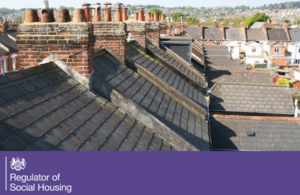Social landlords continue to build new homes, RSH statistics show
RSH has published its annual social housing sector stock and rents statistics.

Today (24 October 2023) the Regulator of Social Housing published statistics about the social housing sector, including stock ownership and rents at 31 March 2023.
Returns from all private and local authority registered providers show that the sector provides around 4.5 million homes across England, with a net increase of nearly 34,000 social homes since 2022.
Over the year, providers again increased the number of homes for Affordable Rent, adding around 26,000 to the sector’s stock. Providers also saw an increase of over 14,000 additional low cost home ownership properties. However the number of homes for social rent fell by over 6,000.
Local authorities saw a fall of around 9,000 homes for social rent, while private registered providers built, purchased or acquired around 3,000 which partially offset the decline. This led to the first increase in general needs social rent homes by private registered providers since 2017, with a large proportion added by for-profit providers.
Private registered providers built, purchased or acquired the majority of new homes in the sector, accounting for 87% of the total increase in Affordable Rent and 98% for low cost home ownership properties.
The statistics show that 83% of social homes in England are general needs (social rent and Affordable Rent), while supported housing makes up 11% and Low Cost Home Ownership 6%.
Private registered providers also reported that 68% of homes had an energy efficiency certificate rating of EPC-C or above, and 23% had a rating of EPC-D.
As expected, rents increased over the year. The average increase in general needs (social rent) average weekly net rents was 4.1% between 31 March 2022 and 31 March 2023 (in line with the limit set for 2022/23). The average weekly general needs rent in England was £98.20 with variations across different regions of the country. Rents were lowest in the North East (£82.08) and highest in London (£121.09).
The data shows that levels of sales, lettings and evictions seem to be stabilising after a few years of fluctuation during and following the coronavirus pandemic.
Will Perry, Director of Strategy at RSH, said:
Our statistics for 2022/23 show that the sector continues to build and acquire much-needed new social homes across the country.
These data are a really important reference point for registered providers and anyone who wants to understand the key trends in the sector over the past year. It is essential that providers continue to have good quality data to inform their strategic decision making, especially around rents and the condition of homes.
The statistics are available on the RSH website.
Notes to editors
- Local authority social housing data was formerly collected through the Local Authority Housing Survey. Since 1 April 2020 it has been collected by RSH through the Local Authority Data Return, when RSH took on the responsibility for regulating local authority rents. Private registered provider data has been collected by RSH though the Statistical Data Return since 2012.
- Both local authority and private registered provider stock and rents statistics are designated as National Statistics by the UK Statistics Authority.
- There were 1,606 providers on RSH’s register on 31 March 2023. Of these, 221 were local authorities and 1,385 were private registered providers.
- Homes include self-contained units such as houses and flats and non-self-contained bed spaces, referred to collectively as units in the data.
- Of the c. 4.5 million units of social housing stock owner by registered providers, private registered providers own 2.9m homes while local authority registered providers own 1.6m homes.
- For the first time, providers were asked to give the reasons for homes not meeting the Decent Homes Standard. Providers reported that, of the homes that did not meet the DHS, 48% were not in a reasonable state of repair, 47% did not provide a reasonable degree of thermal comfort, 30% did not meet the statutory minimum standard for housing and 14% did not have reasonably modern facilities or services. Some homes were reported as failing more than one of the criteria, so these percentages do not total 100%.
- The Regulator of Social Housing promotes a viable, efficient and well-governed social housing sector able to deliver and maintain homes of appropriate quality that meet a range of needs. It does this by undertaking robust economic regulation focusing on governance, financial viability and value for money that maintains lender confidence and protects the taxpayer. It also sets consumer standards and may take action if these standards are breached and there is a significant risk of serious detriment to tenants or potential tenants.
- For press office contact details, see our media enquiries page. For general queries, please email enquiries@rsh.gov.uk or call 0300 124 5225.